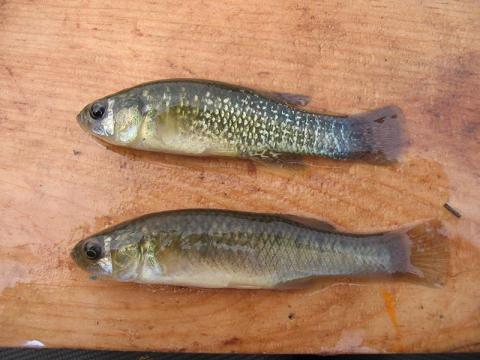The Marvelous Mummichog

The Coastal Research Volunteers team was out in the field this July helping the New Hampshire Department of Environmental Services Coastal Program monitor nekton, or swimming organisms, such as shrimp, fish and crabs along several salt marshes in NH. These salt marshes support most life stages of fish and crabs, which are essential to the food web.
Pictured here, this lifelong marsh resident, the mummichog, Fundulus heteroclitus, was the most often catalogued fish that we monitored. Aptly, its name means "to follow, or go in crowds" in indigenous languages.
Mummichogs have adapted to low levels of oxygen and poor water quality conditions due to being stuck in shallow pools and pannes, as the tide recedes. If the water doesn't return and the pool dries up, they can even burrow several inches into the mud! These small but mighty fish are definitely worth a closer look next time you visit the salt marsh. And did I mention they love mosquito larvae? Thank you mummichog for keeping the "mozzies" away!
